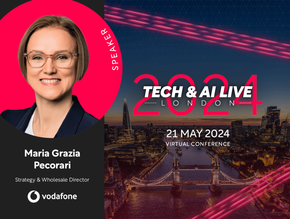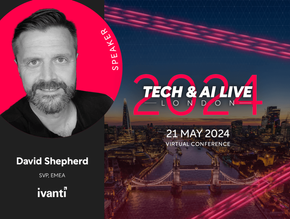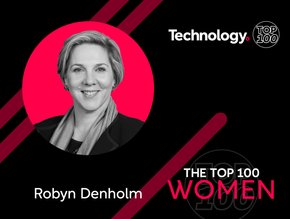CSI: How to move legacy, on-premise applications to the cloud

Most companies can easily see how at least some of their business workload can be in the cloud, but a large majority of business critical workloads still remain on on-premise infrastructure, unable to be moved. The average cloud services provider can fix the easy processes like emails, video streaming, web apps and expense reports or HR apps. But can they put the more complex mission-critical and often regulated services like ERP, manufacturing processes, core banking, insurance pricing or even pension management in the cloud?
Enter the hybrid cloud
The good news is that there is a cloud solution for almost every business application. A hybrid cloud environment may contain a mix of multiple cloud providers and clouds – whether that’s private, public, or software-as-a-service and at the centre of this hybrid approach is a business’ designated private cloud. The private cloud provides the advantages of ownership, control, security and economics allowing for greater economies of scale.
There is no one-size-fits-all when it comes to selecting the right cloud platform. Taking each application to the most suitable platform and managing them in a multi-cloud – or hybrid cloud – environment is the next chapter in driving real business growth.
Unlocking the ‘uncloudifiable’ applications
When it comes to the issue of moving across complex legacy applications that often are the backbone and core of a company’s business process, they are usually written in old, outdated code that are not compatible with all that the multi-threading public cloud offers. Once deemed ‘uncloudifiable’ these applications are now able to be effectively modernised and can be quickly migrated to the cloud and integrated with existing applications that are already in the cloud.
Rather than put these large complex applications on the public cloud, which do not have the receptacles for big IBM i applications as an example, they can be transferred to a private cloud that acts with similar economics and behaviours of a public cloud. An example of this being the CSI PowerCloud which can host the sensitive and complex applications whilst connecting directly to Microsoft Azure, Salesforce, SAP, Google Enterprise or IBM Cloud if required.
Realising economies of scale
Previously bought and built based on peak flow – IT architecture is now bought or provided based on consumption thanks to the cloud. For businesses that have a desire to move their large legacy applications to the cloud, it’s now possible to buy AIX and IBM i on a pay-as-you-go (PAYG) basis.
These legacy apps are not only enjoying the economics of the public cloud in their private environment, but are also directly connected to the world’s public cloud with near zero latency. Never before could legacy apps access the cloud at such speed to transact or to be recompiled and migrated or repatriated back to a private cloud all at the same time. The result is a consumption-based commercial model which avoids over-investment or under-provisioning.
Once applications are in the cloud, they are then agile enough to be moved from one cloud platform to another to take advantage of improved pricing, providing even greater cost efficiencies.
SEE ALSO:
-
IBM actively driving hybrid cloud and AI solutions in Europe
-
Fujitsu teams up with Ford subsidiary Autonomic to support cloud-based mobility-as-a-service models
-
Alibaba fourth-quarter revenue surges 51% to $13.9bn thanks to retail and cloud boost
The in-flight journey
Never before has the journey of curating, mentoring and guiding an application to the right cloud infrastructure been so important. There are many aspects that a cloud management provider would analyse before migrating an application to the cloud. The first step is to look at any strategy issues such as regulation and compliance considerations that need to be made. Next is to look commercially at the licensing requirements of the application to avoid unnecessarily paying twice if it is moved to the cloud. Other considerations include how to back up the application when it no longer requires a person on-premise to manage it, and how to ensure that the cloud platforms maintain compliance and automatically deliver regulatory reports.
The final step is migrating the application. Moving hundreds of servers manually is a long process, open to human error. With multi-cloud migration, it’s essential that this process is automated and handled securely with enterprise-grade cyber security wrapped around it and risks mitigated along the way.
What else is within reach?
Successful migration and management of even the most complex applications to the cloud will give a business its perpetual edge to excel. Offering all of the security, efficiency and scalability to drive significant value, the cloud provides greater computing power and access to innovative services such as analytics, machine learning, IoT and blockchain.
When managed effectively, uptime and analysis is taken care of leaving businesses to focus on driving revenue for sustainable business growth. What’s more, there’s no longer the worry of what they are paying for in the basement as the cloud ensures that they will never pay for unused compute again.
Mark Vargo is the Chief Technology Officer at enterprise consultancy firm CSI
- OpenText’s Muhi Majzoub: Engineering Platform Growth with AIEnterprise IT
- OpenText AI: Empowering Businesses in Information ManagementDigital Transformation
- Microsoft in Japan: $2.9bn Investment to Boost AI & CloudCloud & Cybersecurity
- Atos Edge Transformations are Driving Business ValueDigital Transformation






